While tomatoes are generally easy to grow, they sometimes struggle to thrive and need help. Learn how to save a dying tomato plant and restore it to health.
- Proper soil preparation and pH adjustment are essential for healthy tomato plants.
- Identifying and addressing watering schedules and nutrient deficiencies can revive a struggling tomato plant.
- Organic control methods can be used to combat common tomato pests and diseases.
- Location selection, temperature control, wind protection, and mulching techniques all play a role in maintaining healthy plants.
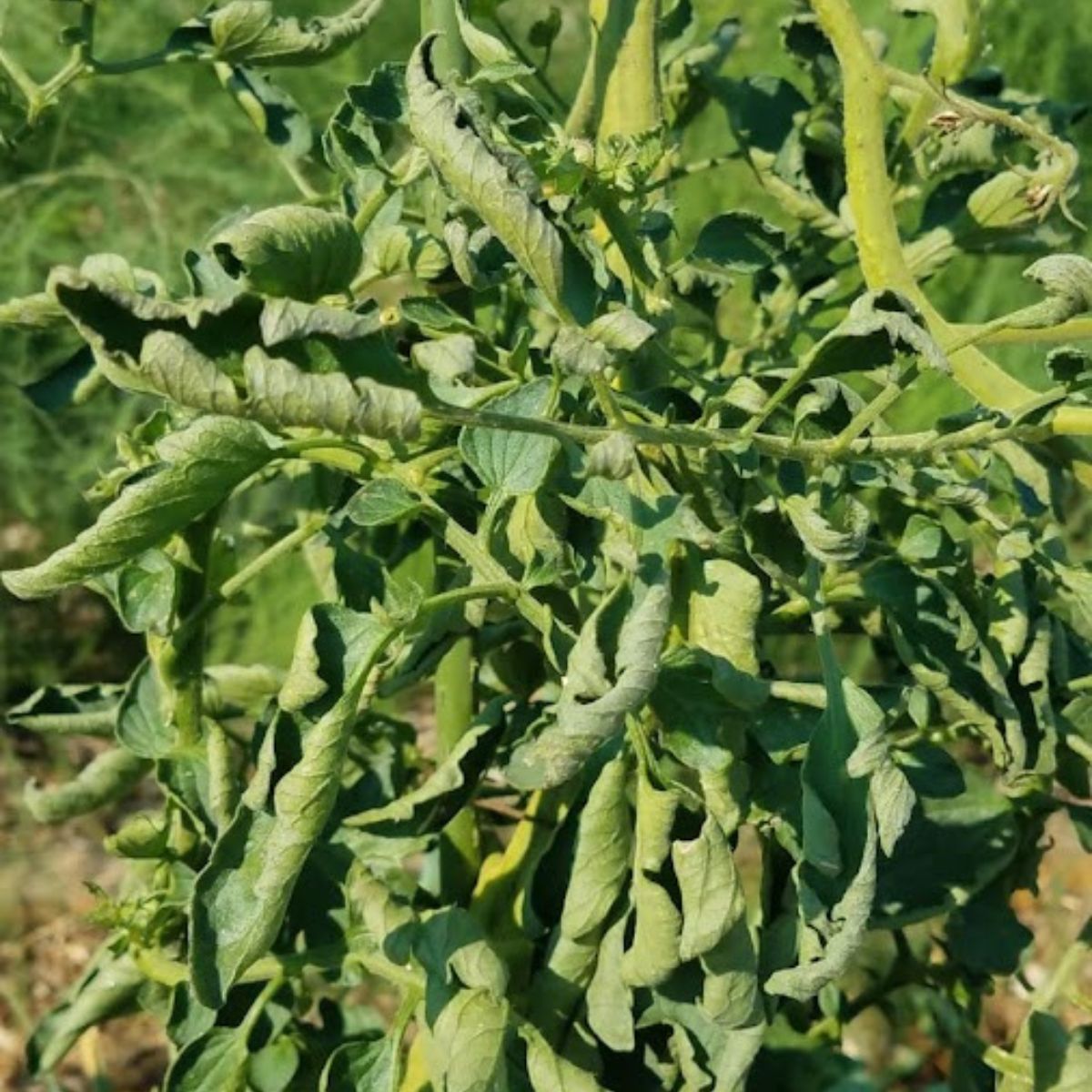
How To Save a Dying Tomato Plant
Don’t give up hope yet: it’s possible that you can save your plant.
Are your plants over or under-watered? Over-watering can cause root rot, while lack of water can lead to wilted leaves and flowers. Both will stunt the growth and production of tomatoes. Ensure you provide enough water and allow the top layer of soil to dry out before watering again.
Check the soil pH. Tomatoes prefer slightly acidic soil, so if your soil is too alkaline or acidic, the plant won’t be able to take in all the nutrition it needs. You can adjust the soil pH using commercial fertilizers and mulching techniques.
Use tomato varieties suited to your area’s climate. Some varieties may not be able to tolerate extreme heat or cold weather, so planting ones that do better in your area will help ensure success.
And remember to supplement with a balanced fertilizer or compost tea every few weeks to ensure proper plant nutrition – this will keep plants healthy and strong throughout their growing season!
Why Is My Tomato Plant Dying
You’re probably wondering why your tomato plant is dying, and there are a few possibilities to consider. It could be due to watering issues, nutrient deficiencies, pests, diseases, or improper pruning or support. Whatever the cause of your tomato’s demise may be, it’s essential to identify it quickly and take steps to save the plant.
With proper care and guidance, you can get your tomato thriving again!
1. Watering issues
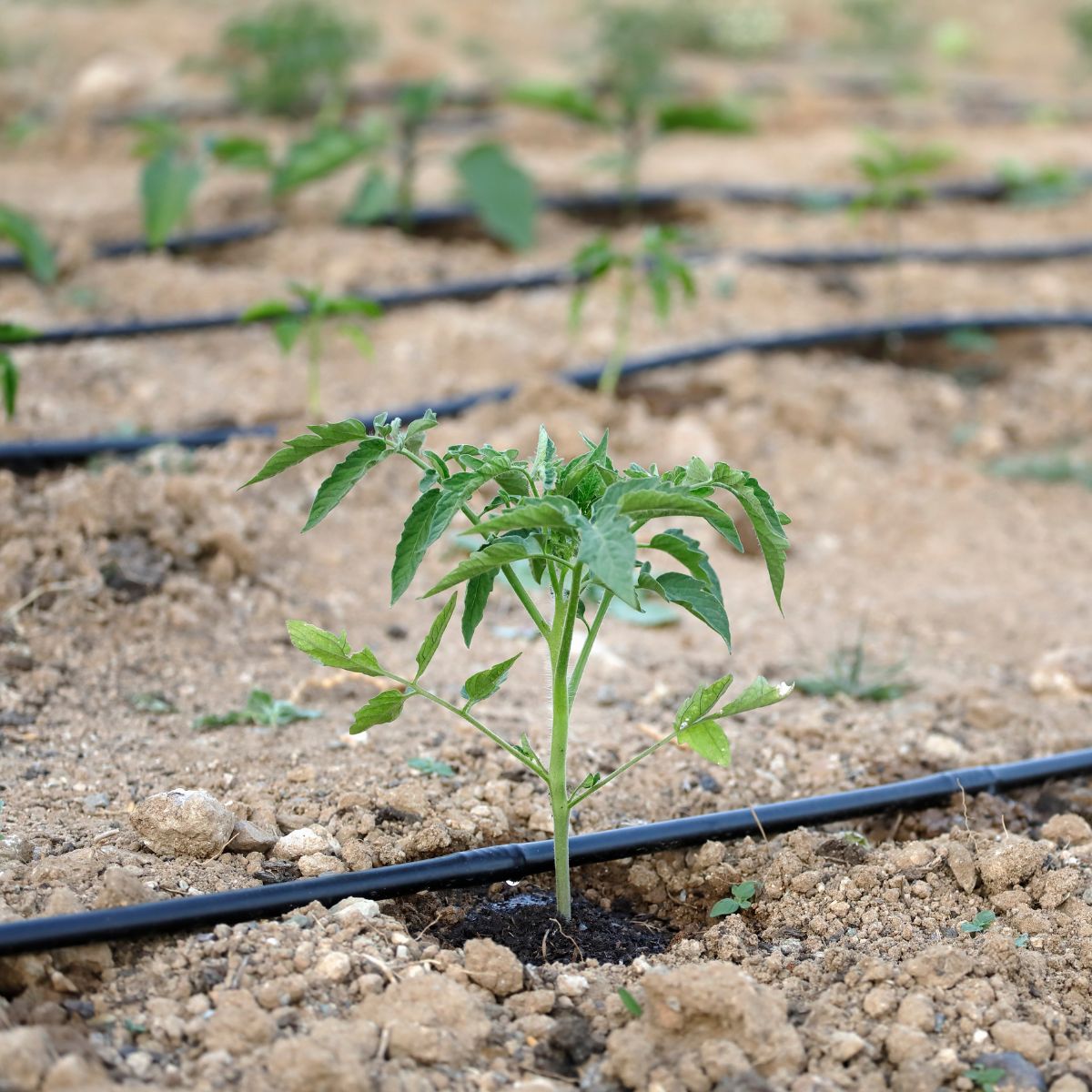
If you’ve noticed your tomato plant wilting or its leaves turning yellow, it’s likely a sign of insufficient watering. To help revive the plant, you’ll need to understand how much water it needs.
Tomato plants generally require deep but infrequent watering to develop their roots properly and produce healthy fruit.
Signs of insufficient watering
If the leaves have turned yellow and feel limp to the touch, this is a sign that your plant isn’t getting enough water.
In addition to looking for wilting and drooping leaves, you should also check the soil moisture and pH levels. If these levels are off, it can prevent your tomato plants from taking up the water they need to survive.
How much water does a tomato plant need?
The right amount of water for a tomato plant depends on several factors, such as soil type, tomato variety, amount of sunlight, temperature, etc.
Generally, give your tomatoes one to two inches of water per week. Keep an eye on them: if you’re going through a hot weather spell, they might need watering twice a day, especially if you’re growing them in pots.
Important: water your tomatoes from the base, not the top, as wetting the leaves can create a good environment for disease.
The best time to water tomatoes is either in the evening after the sun goes down, or early in the morning. This way, you avoid wasting water through evaporation during the hot time of the day.
2. Nutrient deficiencies
Lack of nutrients can cause tomato plants to die. If you suspect this issue, it’s important to identify key nutrient deficits: nitrogen, phosphorus, and potassium. Each one affects different aspects of your tomato plant’s health.
Look for symptoms such as yellowing leaves or stunted growth to determine which nutrients are lacking.
Nitrogen, phosphorus, and potassium deficiency symptoms
Without adequate nitrogen, phosphorus, and potassium, a tomato plant’s leaves may turn yellow or curl. Nitrogen toxicity can cause the leaves to become pale green or yellow, while too little nitrogen will cause leaves to turn yellow and drop off.
When phosphorus levels are too high in the soil, tomato plants may exhibit stunted growth or purplish discoloration of older leaves. On the other hand, if there isn’t enough phosphorus, new growth may be sparse and slow.
Potassium deficiency in tomatoes results in leaf curling at the edges and wilting of lower foliage.
Learn more about nutrient deficiencies in tomatoes.
3. Pests
Dealing with pests on a tomato plant is often inevitable. You may have noticed aphids, tomato hornworms, fruit worms, pinworms, or stink bugs on your plant! If so, it might be the reason your plant is suffering.
Aphids
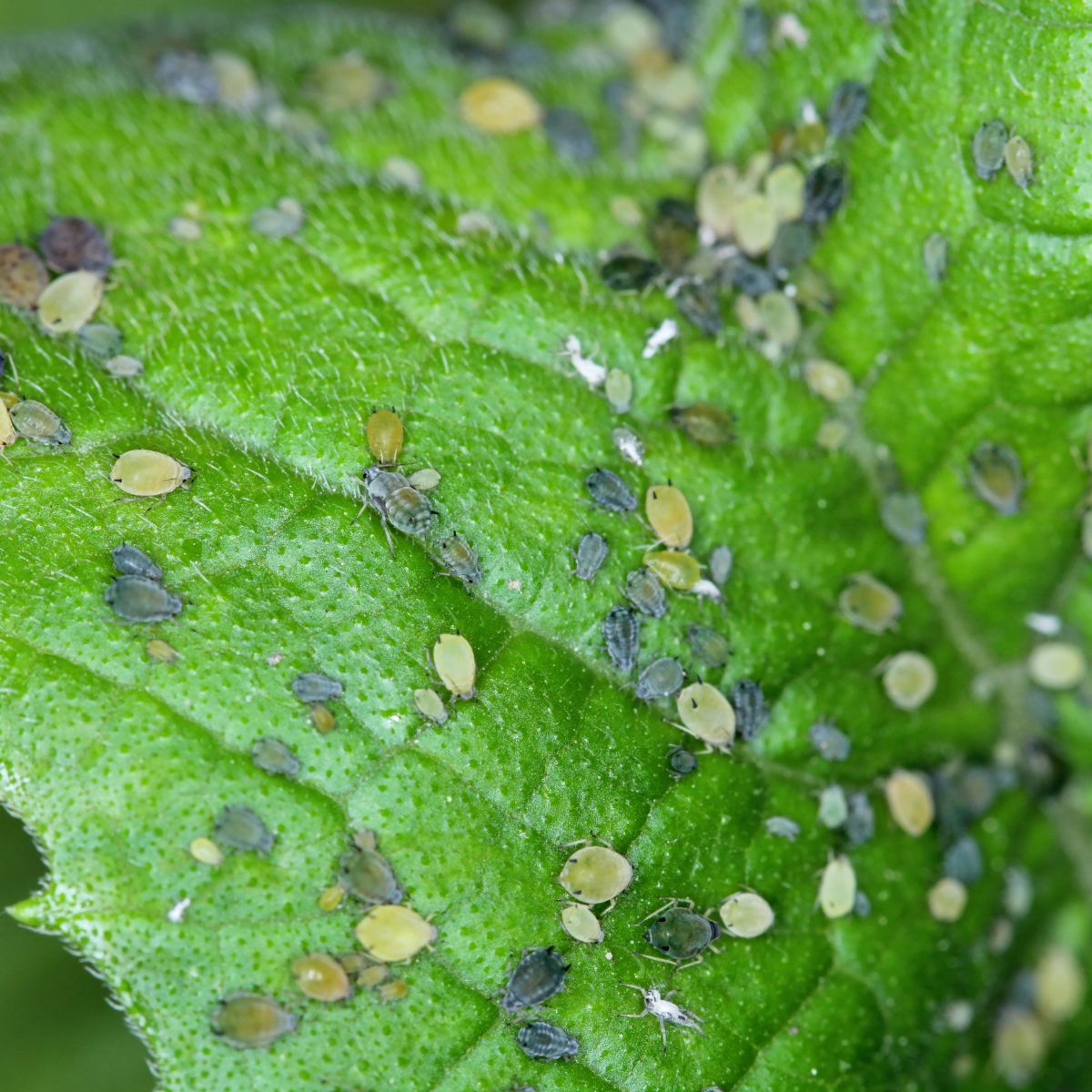
Very common in many gardens, aphids are not too hard to eliminate. A simple water spray will knock them off your plant, and they’ll die there. Or, you can try soapy water, garlic water, or attracting birds and ladybugs, which will feed on them.
Learn more about controlling aphids.
Tomato hornworms
Tomato hornworms are a common pest that can completely defoliate a tomato plant in just a few days. And since they are green, they hide well. But you’ll know they are there because your tomato leaves are disappearing, and you’ll also see the hornworm poop.
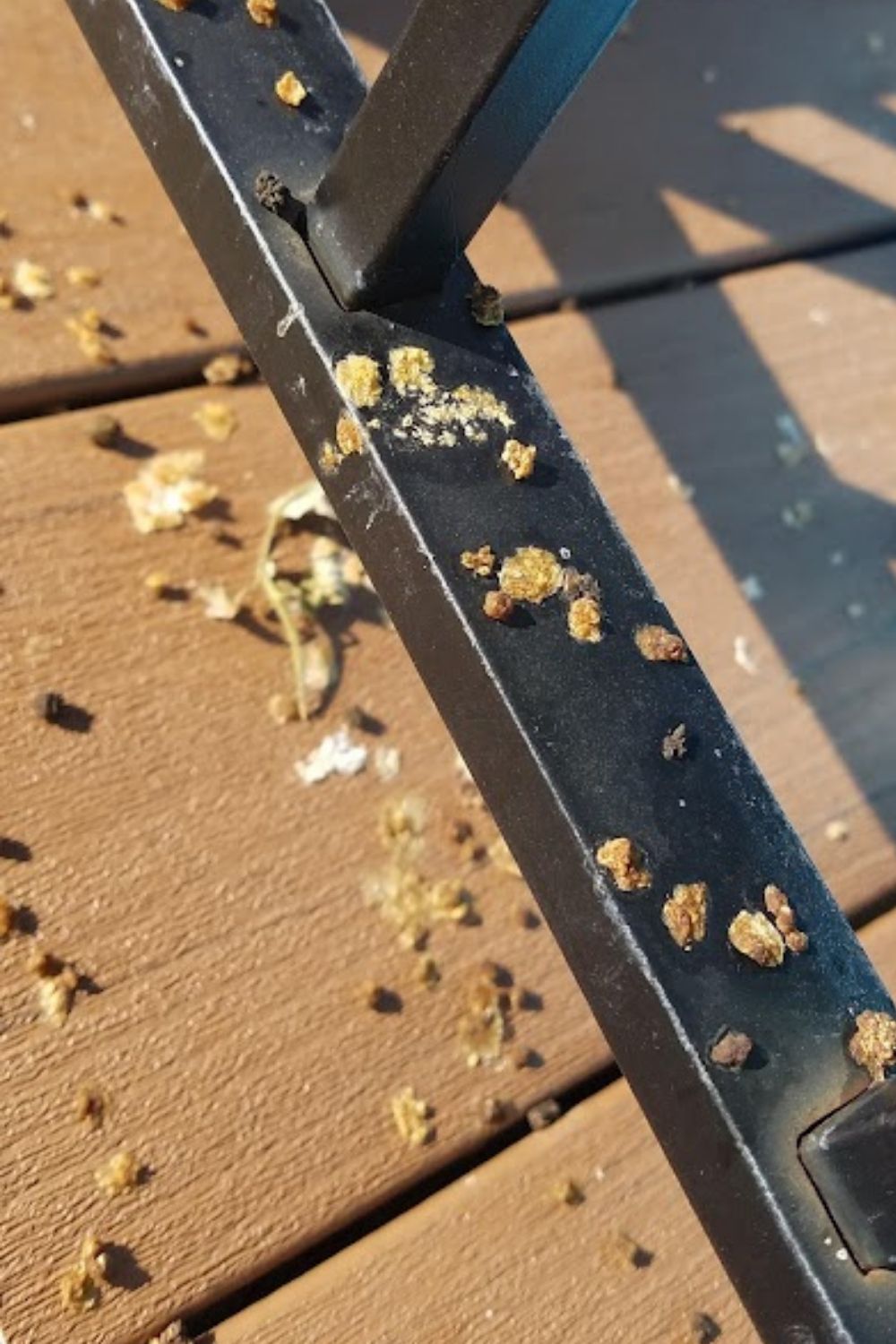
The best way to get rid of hornworms is to pluck them out by hand. If you have chickens, they make a delicious treat for them.
If you have difficulty finding the tomato hornworms munching on your plants, use a black UV flashlight at night: it makes it very easy to spot them.
Tomato fruitworms

If you ever picked a tomato and realized it’s rotting from the inside out, you’re dealing with tomato fruitworm. They are nasty and will ruin your entire crop.
But you can prevent getting them by looking for eggs or using a cover cloth to keep the moths from laying their eggs.
If you already found fruit worms in your tomatoes, you can invite natural predators, such as lacewings and parasitic Trichogramma wasps. Sadly, once this worm takes residence in a tomato, it’s no longer edible.
Tomato pinworms
The tomato pinworm lays eggs on the undersides of the leaves or somewhere on the stem. The eggs are difficult to notice due to their small size, but you’ll soon see “tracks” in the leaves as the caterpillar feeds on them.
They eventually make their way to the fruit and can completely destroy the pant. Learn more about how to control this annoying tomato pest.
Stink bugs
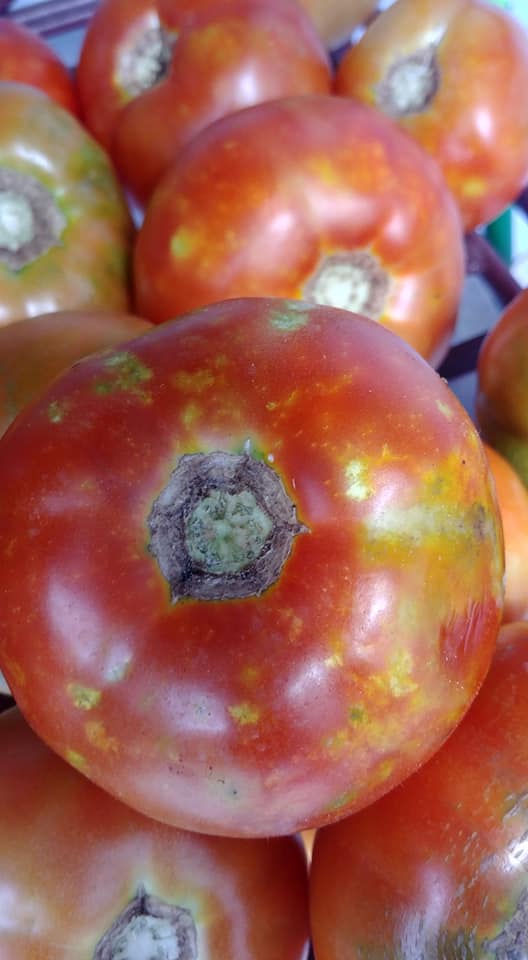
Adult stink bugs are shield-shaped, varying in colors such as brown, green, red, pink, or yellow. They overwinter on the ground and become active in March-April, laying drum-shaped eggs in clusters on foliage.
The damage caused by stink bugs includes dark pinpricks surrounded by light discoloration on green fruit, which may turn yellow or remain light green on ripe fruit. Stink bugs can also introduce pathogens through feeding, potentially leading to fruit decay.
To minimize damage, apply permethrin-based insecticides like Bonide Eight regularly, approximately once a week, according to the instructions on the label.
4. Diseases
Here are some of the most notorious tomato plant diseases:
- Early Blight (Alternaria solani)
- Late Blight (Phytophthora infestans)
- Tomato Leaf Mold (Passalora fulva)
- Fusarium Wilt (Fusarium oxysporum)
- Verticillium Wilt (Verticillium spp.)
- Bacterial Spot (Xanthomonas spp.)
- Bacterial Speck (Pseudomonas syringae pv. tomato)
- Septoria Leaf Spot (Septoria lycopersici)
- Gray Mold (Botrytis cinerea)
- Anthracnose (Colletotrichum spp.)
- Powdery Mildew (Leveillula taurica, Oidium neolycopersici)
- Tomato Mosaic Virus (TMV)
- Tomato Yellow Leaf Curl Virus (TYLCV)
- Tomato Spotted Wilt Virus (TSWV)
- Root Knot Nematodes (Meloidogyne spp.)
- Southern Blight (Sclerotium rolfsii)
- Tomato Pith Necrosis (Pseudomonas corrugata)
- Tomato Corky Root (Pyrenochaeta lycopersici)
If left untreated, these diseases can cause severe damage to your tomato plants. So, it’s important to identify them early and take preventive measures to protect your crop.
Here are a few easy things you can do to prevent tomato plant diseases:
- start with healthy plants
- provide good air circulation
- use drip irrigation or a soaker hose to water at the base, and avoid overhead watering since splashing water on the leaves can promote disease spreading
- mulch the soil to prevent soil-borne diseases from splashing onto the leaves
- practice proper sanitation (promptly remove and destroy any infected plant material and clean gardening tools and equipment between uses to prevent the spread of pathogens)
- stake or support plants to prevent them from touching the ground and reduce the risk of soil-borne diseases.
- keep a close eye on your tomato plants and monitor for any signs of diseases, such as wilting, spots, or discoloration; early detection allows for timely intervention
- practice crop rotation to disrupt disease cycles and reduce pathogen buildup
It’s also best if you buy disease-resistant varieties of tomatoes, such as:
- early girl
- Cherokee purple
- brandywine
- better boy
- green zebra
- etc.
5. Over-pruning
While pruning tomatoes benefit the plants, improper pruning can be disastrous. When you aggressively prune tomatoes, you take away a lot of the leaves that provide shade. This means the fruit gets too much direct sunlight and can get sunburned, called sun-scald.
If you remove more than one-third of the leaves all at once, it can not only damage the fruit, but it can even cause the whole plant to die.
Transplanting Tips
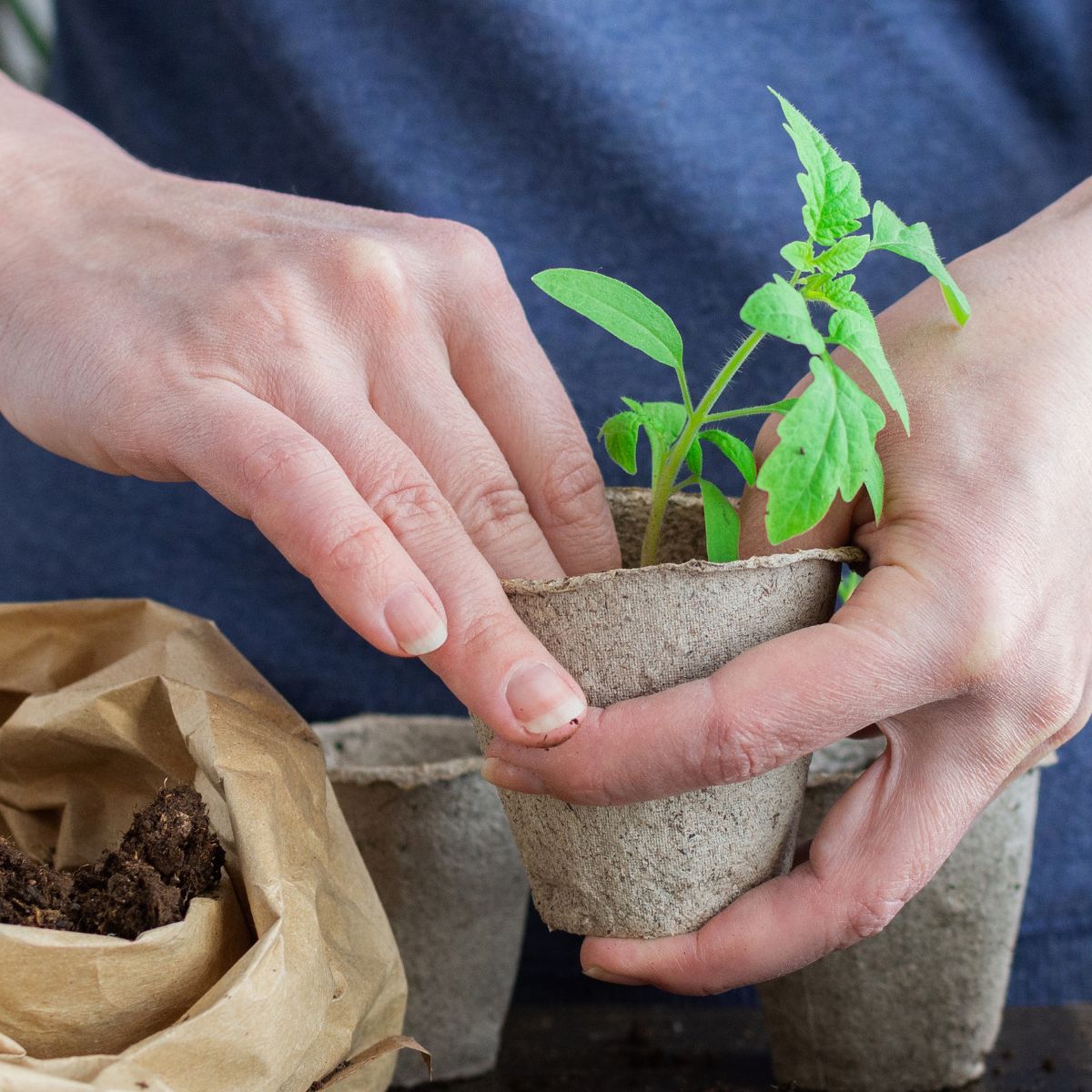
Sometimes your tomato plant may look like it’s dying right after transplanting. And since transplanting is essential in ensuring that your tomato plants will thrive, it’s crucial to get it right!
Here are the steps for adequately transplanting tomatoes:
- start by hardening your tomato plants
- choose the right planting location: make sure tomatoes get 8 to 10 hours of sun
- prepare and amend the garden soil (check out my page about the best soil mix for tomatoes)
- leave enough space between plants (here’s a good guide for spacing tomatoes)
- clean up the plant by removing the lowest leaves; remove any blooms, too, as the plant needs the energy to get established before it can produce fruit
- dig a hole twice as big as the current pot your tomato is in, gently fluff up the roots, and stick the tomato plant into the hole, burying some of the stem too (tomatoes will grow roots from every part of the stem that is buried)
- fertilize
- mulch the base of your plant
- give it a good, deep watering
- stake your tomato plants
How to Revive a Dying Tomato Plant
First off, it’s essential to identify what might be causing the problem. Root rot, over-fertilizing, and poor soil are common causes of a dying tomato plant.
To revive your tomato plant, you’ll need to address the underlying cause of the problem. If soil testing reveals an imbalance in nutrients or too much fertilizer has been used, you should adjust accordingly by watering more often or using less fertilizer.
If root rot is suspected, remove affected roots and repot your tomato plant in a fresh potting mix.
Remove the affected plant parts and address the culprits if you notice pests or diseases.
Practical Tips For Thriving Tomatoes
Here are a few more tips to help you grow healthy tomatoes:
- best tomato companion plants
- tips for growing tomatoes in containers
- how to keep deer from eating tomatoes
- how to prevent tomatoes from splitting
- common tomato issues and how to fix them
- 11 tips for keeping squirrels from eating your tomatoes
- what to do with tomato plants after they die
Following these simple tips ensures that your tomato plants remain healthy throughout their growing season. So, get out there and start gardening today!
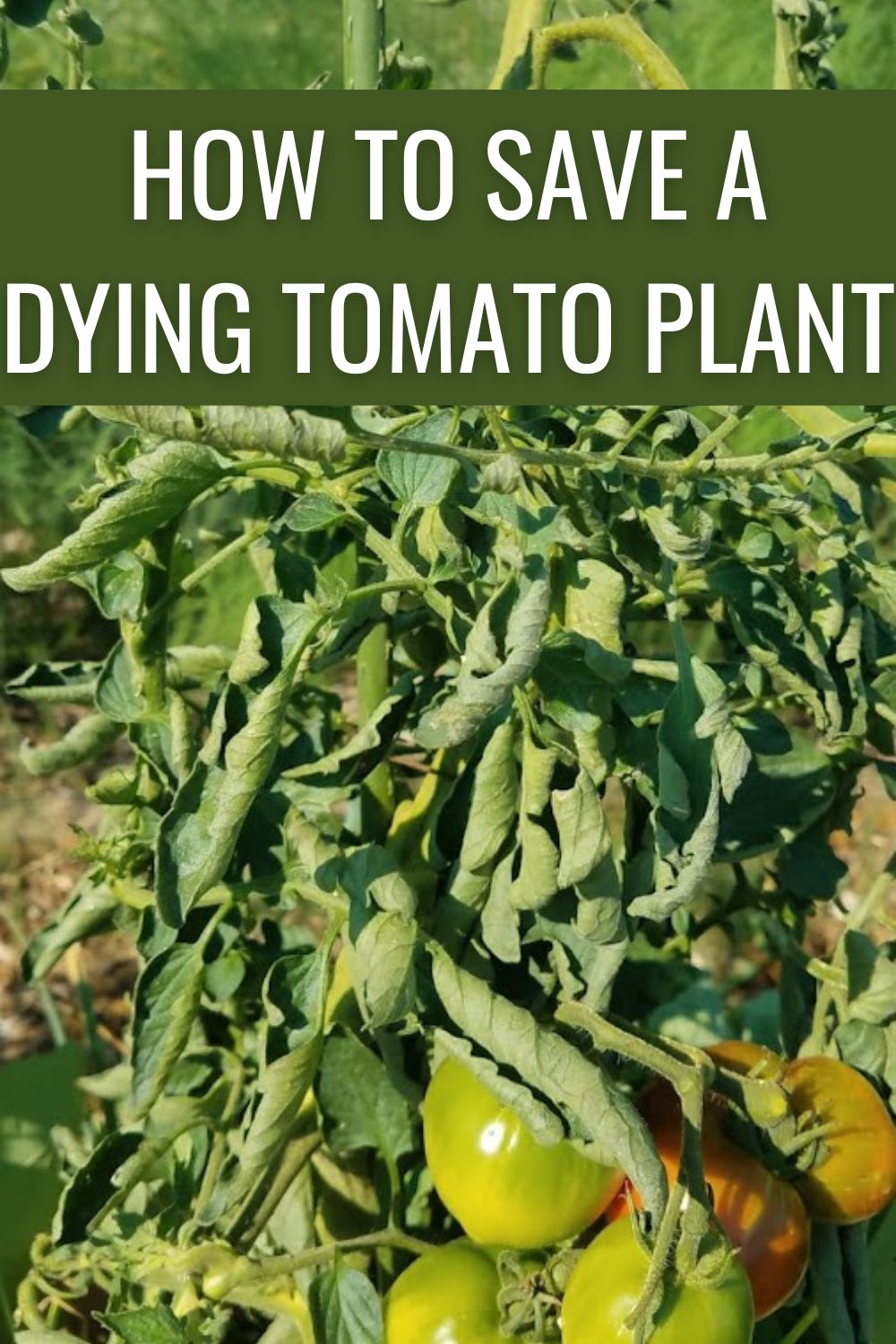

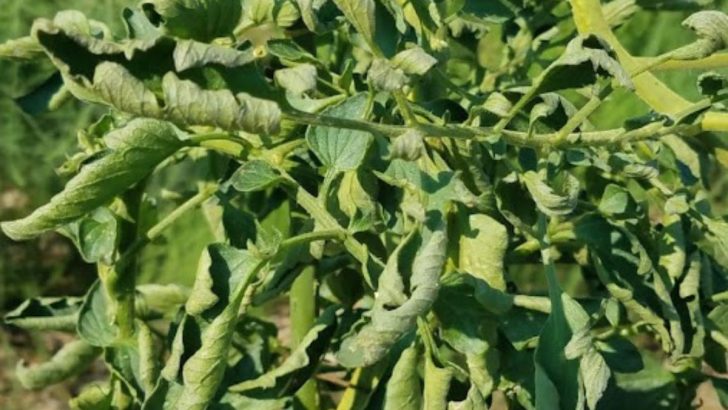


How To Make Tomato Plants Grow Faster - 13 Easy Tips
Wednesday 28th of June 2023
[…] How to save a dying tomato plant […]